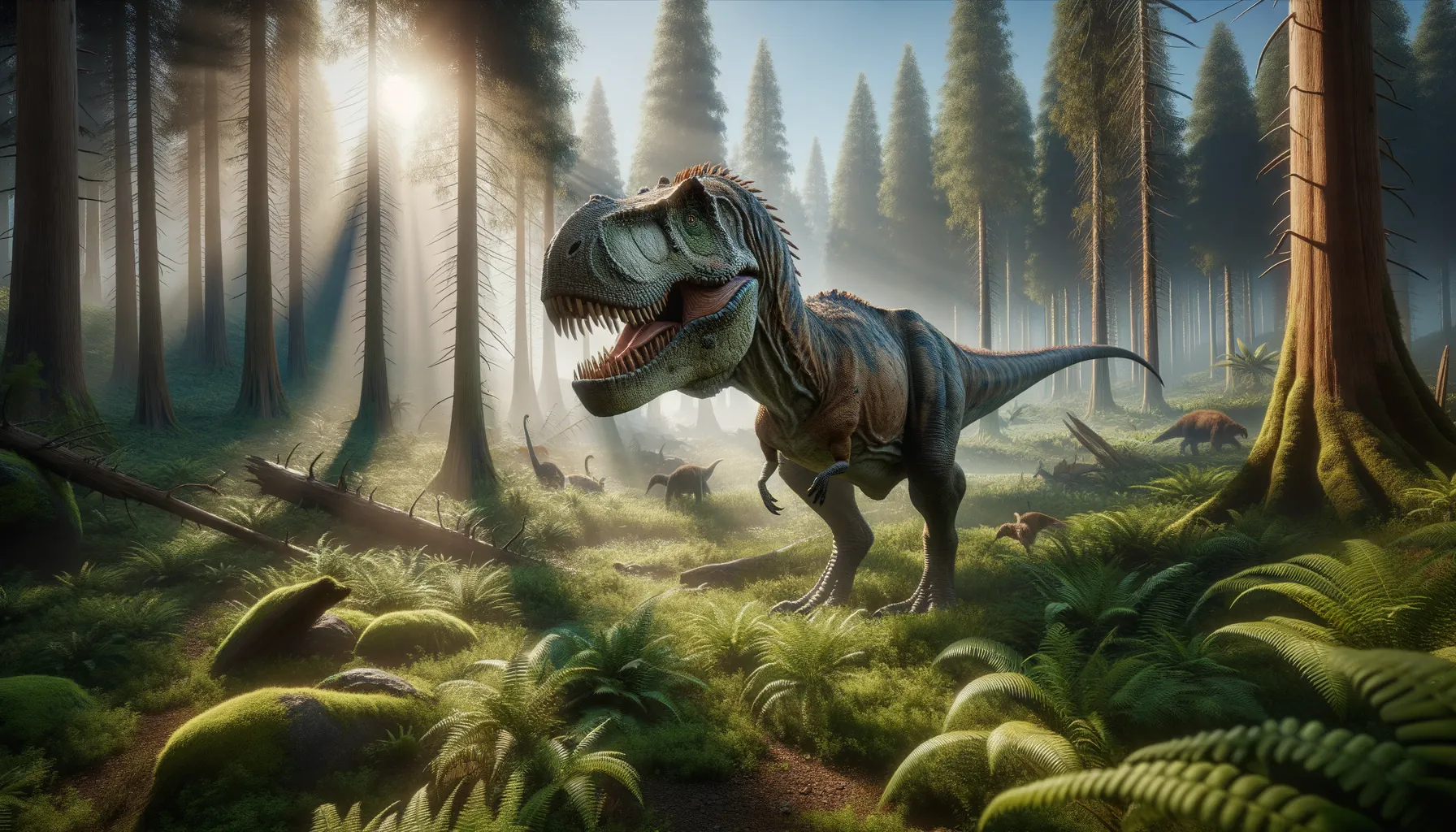
Nicksaurus
Dominating the Jurassic landscape with prowess.
Period
triassic
Length
Roughly 8 meters from head to tail.
Height
Around 3 meters at the hip.
Weight
Approximately 1,200 kilograms.
Nicksaurus was a formidable carnivorous dinosaur from the Jurassic period. Known for its robust build and sharp teeth, it thrived in both forested and open landscapes. Fossils indicate it was well-adapted for hunting in diverse environments, often preying on smaller animals. Its existence provides critical insights into the evolution of theropods towards avian characteristics.
Diet
Nicksaurus was primarily carnivorous, feeding on smaller dinosaurs and carrion. It displayed opportunistic feeding habits, likely including a varied diet to adapt to food availability.
Hunting
As a predator, it relied on stealth and speed to ambush prey. Fossil evidence suggests group hunting strategies, enhancing its efficiency in capturing elusive targets.
Environmental challenges
Nicksaurus faced challenges from both climate fluctuations and competition for resources. Periods of drought might have reduced prey availability. Such conditions forced it to adapt or migrate to find sustainable habitats. Evolving in a dynamic climate, Nicksaurus had to balance its needs with environmental pressures, showcasing its resilience.
Speed
Estimated to have moderate speed, typical for medium-sized theropods.
Lifespan
Roughly 20 to 30 years in the wild.
First discovery
Uncovered in the Gobi Desert during the early 1990s.
Fun Facts
- The Nicksaurus had a unique, vibrant crest on its head, which it might have used to attract mates or communicate with others.
- Despite its fierce appearance, the Nicksaurus was actually a vegetarian, munching on ferns and other plants.
- Nicksaurus traveled in herds, and scientists believe they used collective strategies to ward off predators.
- This dinosaur had an unusually long tail, which helped it maintain balance while navigating through dense forests.
- Its fossils have been found in regions that were once lush, tropical areas, suggesting it thrived in warm climates.
- Nicksaurus had beak-like structures instead of teeth, ideal for clipping leaves and stems.
- Young Nicksaurus were known to form play groups, much like some modern-day animals, to learn social behaviors.
Growth and Development
Juvenile Nicksaurus likely grew rapidly to reduce vulnerability to predators. As they matured, growth rates slowed, focusing energy on hunting skills and social integration. Fossilized bone analysis suggests that maturity was reached in approximately a decade. This rapid growth phase ensured they could quickly take up roles within their ecological niche.
Habitat
Nicksaurus inhabited a variety of environments, from dense forests to open plains. This adaptability allowed it to exploit different ecological niches. Fossil records from riverbeds indicate it frequented areas near water sources. Its versatile habitat preferences enhanced its survival prospects across shifting environments.
Interaction with other species
Nicksaurus often competed with contemporaneous carnivores, indicating a complex food web. Evidence of tooth marks on bones suggests competitive scavenging. It likely had to assert dominance to secure food. While competition was fierce, it might have engaged in symbiotic relationships with smaller scavengers that fed on leftovers.
Natural lifespan
It had a natural lifespan of about 25 years.
Reproduction
Nicksaurus likely reproduced through oviparity, laying eggs in protected nests. Parental care was minimal, with hatchlings needing to fend for themselves quickly. Clutch sizes might have varied, reflecting environmental conditions. Nest placement suggests strategic choices, likely to avoid predators or environmental hazards.
Social behaviour
Fossil evidence suggests that Nicksaurus might have displayed social behavior. Pack hunting would have required coordination and communication. It could have formed loose social structures to enhance survival, especially among juvenile groups. These interactions likely influenced their evolutionary path and adaptation strategies.
Fossil locations
Key fossil sites are located in the Gobi Desert, suggesting a widespread distribution across what is now Asia. Additional fragments have been found in Central Asia, expanding its known range. These discoveries have aided in reconstructing its ecological role during the Jurassic period. Fossil diversity underscores its adaptability across various prehistoric landscapes.
